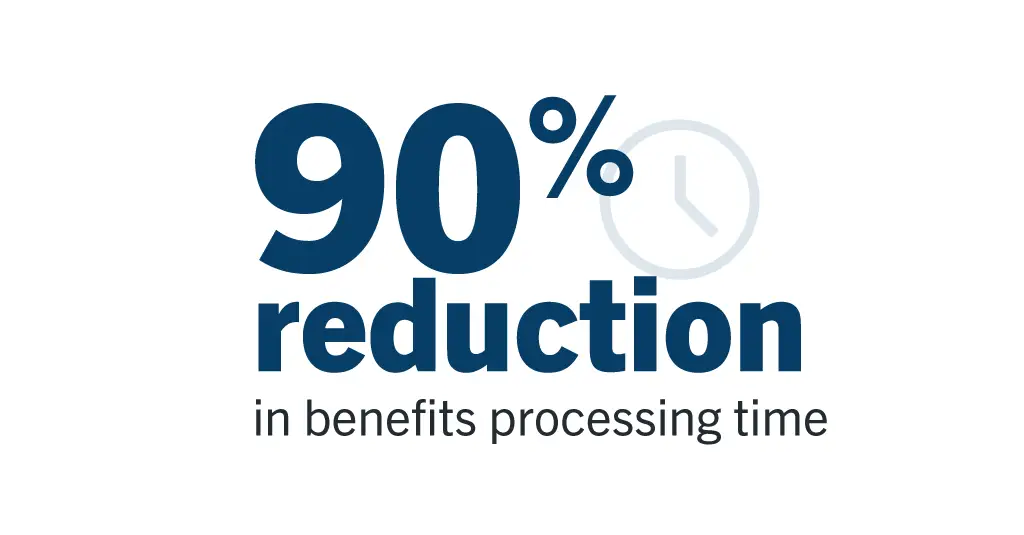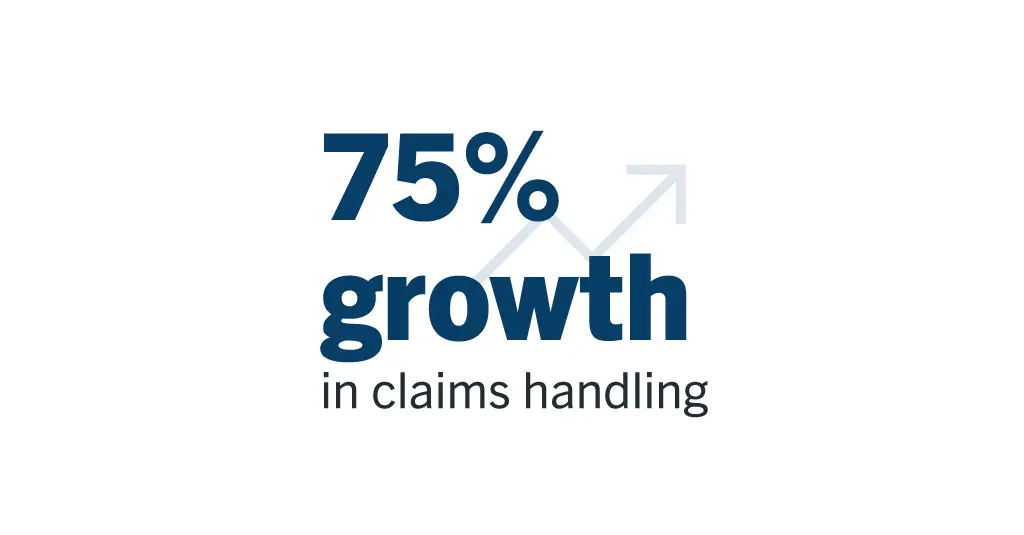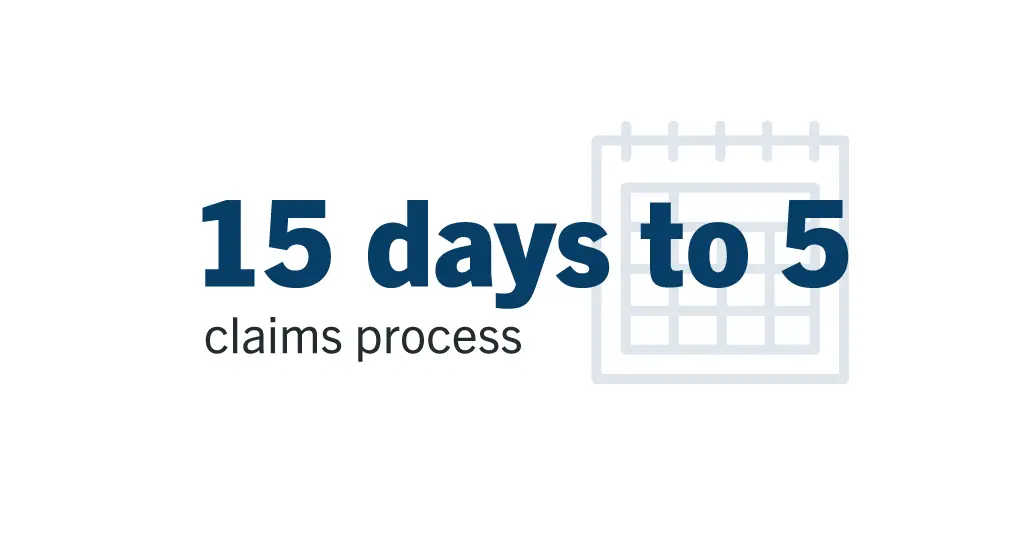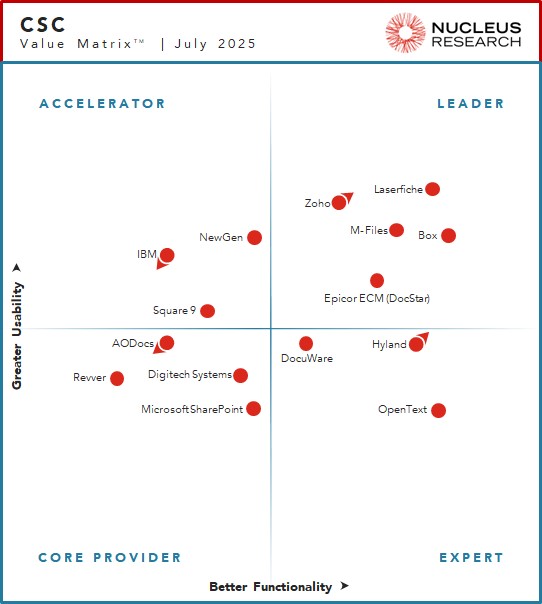- Products
-
-
Product Features
-
Explore More
-
-
- Solutions
-
-
By Industry
By Department
-
By Business Need
-
-
- Learn & Support
-
-
Product Education
-
Product Support
-
-
- Resources
-
-
Insights
Events
-
-
- Partners
-
As the largest pension fund in Tanzania, the Public Service Social Security Fund (PSSSF) serves a vast membership base of nearly 700,000 individuals across the nation, supported by a staff of 1,000 and numerous financial partners. Formed from the merger of four distinct funds over the past seven years, the organization embarked on an ambitious mission: to become the country’s best provider of public sector pension services. This goal required a significant business reengineering effort, particularly to harmonize disparate systems and automate critical processes. PSSSF’s strategic investment in Laserfiche has proven to be a cornerstone of this transformation, fundamentally reshaping how they manage documents and deliver services.

Before adopting Laserfiche, PSSSF faced significant operational challenges stemming from its historical mergers and a reliance on manual, paper-based processes. Managing an immense volume of member documents was a constant struggle. “We had the challenges of searching documents during our processes, and storage occupied quite a big space. Security of the documents was also a challenge,” explained Erick Kato, director of information communication technology at PSSSF. This led to inefficiencies, delays, and a less-than-ideal experience for both staff and members.
The manual nature of operations meant that processing member benefits could be a lengthy ordeal. “Processing benefits could take up to 60 days in some cases,” Kato said. For members, this led to inconvenience and cost. “Some people used to travel more than 900 kilometers to visit our offices to submit documents or inquire about their benefits.” The organization recognized the need for a solution that could centralize records, streamline workflows and enhance accessibility.
The pension fund undertook a thorough evaluation of various systems before selecting Laserfiche. Their decision was driven by Laserfiche’s proven capabilities in enterprise content management, its user-friendly interface, and its robust capacity for document storage and rapid retrieval. “We found Laserfiche was quite easy to use,” Kato explained. “Laserfiche can also store quite a large number of documents and the searching capabilities, when compared with other systems, are very fast.”
Laserfiche was strategically implemented to become the digital backbone of their operations, with a primary focus on membership and benefit processing and payment. The solution enabled the fund to securely store, classify and easily access member records, which is paramount for a pension fund. “With Laserfiche, we can store members’ records in the way that we want them to be stored — we can classify the information and make it easier for our staff to process payments,” said Neema Kuwite, PSSSF director of finance.
Another key aspect of the solution was seamless integration. “We have integrated [Laserfiche] with our system which processes benefits to create an easy experience and eliminate the need for switching applications,” Kato said. Laserfiche integration extends to other critical business areas, including contract management and procurement, creating a unified digital environment. “These integrations have streamlined processes because you don’t have to move from one system to another. For example, from within our benefit processing system, an employee can access member documents from Laserfiche, which can be checked, processed and routed. Processing becomes very fast and easy.”
Furthermore, Laserfiche supports the fund’s broader automation agenda. “We’re looking forward to having Laserfiche support us in other administrative chains,” said PSSSF CEO Abdul-Razaq Badru. “It will help us implement the full automation program that we are embarking on, which includes connecting internal systems and integrating with larger databases to boost overall efficiency.”
The adoption of Laserfiche has delivered transformative results across the organization, validating PSSF’s investment. These include:

Dramatic time savings: The most significant impact has been on benefit processing times. “Processing benefits used to take up to 60 days, but now it takes about 3 to 5,” said Kato. This 90%-plus reduction in processing time has fundamentally improved service delivery.
Cost savings: Both the organization and its members have realized substantial cost benefits. “We save time and we save people the headache of having to be in the records office looking for documents,” said Kuwite. The shift from paper to digital has also freed up valuable physical space. “Laserfiche has helped us to reduce the space we used to keep those records on paper. We can now use the space to hire more people or rent out to others who need office space. It’s really given us a return on investment.” For members, the ability to apply for benefits online means they don’t have to travel, saving them time and money.
Enhanced customer satisfaction: The ability to process payments quickly and provide online access to records has significantly boosted member satisfaction. “With our members, Laserfiche provides increased customer satisfaction by shortening the time it takes to process benefits,” added Kuwite. A customer survey confirmed this, with results showing members are “so comfortable and happy with our services, and the fact that we can pay them in a timely manner. Laserfiche has played a big role in that.”
Strategic and cultural transformation: Laserfiche has become one of PSSSF’s two core systems, alongside the organization’s ERP. “Laserfiche is going to help us achieve our aim of becoming a fully automated enterprise,” Badru explained. The platform is also fostering a culture of technology-driven, evidence-based decision-making. “It is actually pushing us also to think of how we can take advantage of our existing database and use the data for decision making in the future.”
By strategically implementing Laserfiche, this leading pension fund has successfully navigated the complexities of merging legacy systems and transforming into a highly efficient, member-centric organization. The dramatic reduction in benefit processing times, coupled with significant cost savings and enhanced member satisfaction, underscores Laserfiche’s pivotal role. “Laserfiche solves all your problems in processing, especially if you have significant amounts of manual processes or you’re a semi-automated organization,” said Badru. “Laserfiche takes care of all those manual troubles you have.” Looking ahead, the organization is excited about further integration with AI tools, anticipating an even brighter, more automated future.
As one of Mexico’s leading insurance companies specializing in property, casualty and civil liability insurance, GMX Seguros has prioritized operational excellence and customer experience. Facing the perennial challenges of paper-intensive processes, escalating compliance demands, and the critical need for rapid claims resolution, the insurer sought to replace a legacy document management system with a more robust solution.


The insurer found a solution in Laserfiche, embarking on a journey that has dramatically streamlined operations, cut processing times, and fortified GMX’s position as a market leader. Through the organization’s automation initiatives, the insurer achieved an impressive 75% growth in claims handling capacity and a 20-30% increase in other business areas.
Before adopting Laserfiche, the GMX grappled with a complex web of manual processes and physical documentation. Policy issuance, regulatory compliance and claims handling were bottlenecks that hindered efficiency and customer satisfaction.
“We were generating a lot of paper in different ways,” said Oscar Salgado, CIO at GMX Seguros, describing the sheer volume of paper as about the size of a two-bedroom apartment. This physical footprint wasn’t just about space; it translated into slow, laborious workflows. The claims process, a cornerstone of customer trust, was particularly impacted.
“Claims processing used to take more than 15 days,” Salgado said. Longer timelines in claims processing, however, test customer patience in their time of need.
Beyond operational inefficiencies, the company faced stringent regulatory requirements, such as those from the Comision de Seguros, demanding meticulous collection and secure storage of sensitive customer documents (IDs, proofs of address, financial statements) to comply with anti-money laundering regulations. Managing these crucial personal documents across disparate systems was a significant hurdle.
The insurer began implementing Laserfiche with a focus on policy management, digitally archiving all issued policies and integrating them with a customer portal for easy download. This initial success paved the way for more expansive applications.
A key area of transformation was regulatory compliance. “We need to collect IDs, address, proofs of address, statements — all these documents are personal and sensitive data,” Salgado said. “We store them in Laserfiche, and this helps us organize all the documents within our customer folders.” The centralized, secure repository became indispensable for managing sensitive data and demonstrating compliance.
The most significant impact, however, was felt in claims. The company developed a digital claims solution, which collects all necessary documents from customer and automatically builds a digital file. The GMX team built an integration between Laserfiche and the company’s claims system via Laserfiche API which links every claim document to its corresponding policy and customer file, creating a comprehensive digital record.
The insurer’s use of Laserfiche extends to other departments and critical processes including:
The implementation of Laserfiche yielded immediate and profound benefits, most notably in time savings and operational efficiency.

“The time that we are saving is tremendous,” Salgado explained. The most striking improvement was in claims processing: “Claims that used to take more than 15 days now less than five. In some cases, we can process a claim within the same day.”
This strategic advantage became especially evident during a crisis, when GMX experienced an influx of claims in a short period of time. In 2023, Hurricane Otis made landfall near Acapulco and became the costliest tropical cyclone to strike Mexico on record.
“We had the best turnaround time for claims related to Hurricane Otis,” Salgado said. While competitors struggled to process claims for months, the GMX Seguros’ Laserfiche-powered processes allowed the insurer to pay customers in less than a month. “With this efficiency, we can process more claims in less time.” This increased capacity, he added, amounts to 75% growth in claims handling.
Handling 50,000 – 60,000 claims per year and issuing more than 300 policies per day, GMX employees use Laserfiche on a daily basis to support critical service delivery. Beyond claims, the insurer has experienced 20% – 30% growth in other business areas.
GMX has also implemented Laserfiche to increase efficiency in:
The importance of the company’s standardized document management and automated processes is further magnified by audits, which are done internally as well as by regulatory entities. “We use Laserfiche to review and compile all documentation needed for audits, which used to be a very time consuming process,” Salgado said.
The paper reduction has also liberated valuable physical resources, freeing up office space and allowing for better utilization of facilities.
GMX Seguros has not only automated critical processes like claims, compliance, and policy management but has also built a resilient, highly efficient digital ecosystem. The ability to dramatically reduce claims processing times has translated directly into enhanced customer satisfaction, particularly when responding to high-volume events like natural disasters.
“We have some of the best response times in Mexico,” Salgado said. “Laserfiche is not just a document storage system for us. It’s a competitive advantage.”
In today’s rapidly changing insurance landscape, insurers face mounting pressures from economic and environmental uncertainty, coupled with rising policyholder expectations. Navigating these challenges means they need to improve how they operate, enhance customer experience and manage compliance costs. A recent industry survey, however, revealed a problem: Many insurers aren’t set up to tackle these strategies effectively. In fact, over half of them cited data fragmentation as their top operational hurdle.
Insurance companies continue to rely on inefficient data collection such as paper-based forms and static PDFs, forcing policyholders into tedious, error-prone data submissions. These outdated processes lead to manual data entry, repeated follow-ups, and inconsistent service. As a result, customers churn and bring down net promoter scores (NPS). Meanwhile, policyholder data is scattered across line-of-business applications, forcing staff into a “swivel chair” routine as they search for crucial data. This disconnected approach not only delays decision-making but also creates significant operational inefficiencies.
At the same time, insurers are grappling with increasing volumes of data from connected devices like telematics, smart home systems, and wearables. While this influx of data represents a tremendous opportunity to tailor policies and set accurate premiums, many insurers lack the capabilities to capture business-critical metadata efficiently.
Harness Your Data: From Overwhelmed to Supercharged
So, what can insurers do to turn data into business intelligence? The answer lies in embracing an enterprise content management (ECM) system as a unified source of truth and data orchestration engine.
With an ECM as the data backbone, insurers can:
Leading ECM systems also incorporate generative AI features with the potential to revolutionize the way insurers intake claims, policy updates, and service requests from multiple channels.
These strategies not only improve productivity and cut costs but also elevate the overall policyholder experience – a vital factor in today’s competitive market.
Ready to learn how to turn data into strategic actions with an ECM platform? Download our free whitepaper, “Connect the Dots and Unlock the Power of Data in Insurance,” to discover how AI-powered data management can unlock the full potential of your data and lead your organization into a more efficient, customer-centric, data-driven future.
Amid a prolonged workforce shortage, increasing order volume, SKU proliferation, pressure to speed up delivery times and lingering economic uncertainty, factories and warehouses are turning to AI-powered technologies to automate time-consuming tasks. But for all their investments in digital transformation, many supply-chain organizations are still performing essential tasks manually, leading to a high volume of paperwork, frequent data silos, manual approval processes and a lack of visibility. All those manual tasks tap the brakes on production countless times each day.
As generative AI (GenAI) rapidly gains a foothold in supply chain operations, leaders in the manufacturing and distribution industries are recognizing the power of automation and GenAI to drive process improvements, according to the 2025 MHI Annual Industry Report. With strategic digital implementation of GenAI, supply-chain companies can streamline laborious processes, automate data extraction and eliminate bottlenecks, driving significant operational gains across the organization. This eBook will explore how enterprise content management (ECM) solutions—such as Long Beach, Calif.-based SaaS provider Laserfiche®—can help manufacturers and distributors become more agile, efficient and responsive to the ever-changing dynamics of supply-chain operations.
The 2025 MHI Annual Industry Report shows that supply-chain executives understand the value of ECM solutions such as Laserfiche. The survey found that 51% of organizations are working to accelerate their digital transformation by harnessing the power of data, but without an ECM solution, that task is daunting. MHI’s report found that 44% of manufacturing leaders say the amount of data their companies collect has doubled in just the past two years, and they expect it to triple by 2030.
Spreadsheets remain ubiquitous, with 70% of manufacturers entering data manually and 68% still using spreadsheets to analyze data, according to the MHI report. The tedious nature of data entry is just one of the factors contributing to the manufacturing industry’s labor shortage, which is expected to reach 2.1 million unfilled jobs by 2030, according to the report.
The amount of data associated with supply-chain operations is growing exponentially, and managing that data is essential, empowering manufacturing leaders to identify bottlenecks and make strategic decisions more quickly. Manual data management and data silos lead not only to wasted time and increased costs but also to complicated processes and frustration for workers and customers.
Through automated data structures, streamlined data extractions and data uniformity across documents, executives can make informed decisions as challenges arise, supporting critical business processes and driving ROI for their organizations. Clean data starts with evaluating how well existing software systems and business processes are integrated. The next step is to bridge the process gaps between applications such as enterprise resource planning, manufacturing execution and customer relationship management. A centralized repository platform such as Laserfiche can serve as the single trusted source for up-to-date information, and that accuracy improves strategic planning and decision-making.
Data silos make it all but impossible to drive efficiency and streamline business processes across multiple applications and business units. That lack of transparency also makes it harder to measure ROIs and improve margins over time. By eliminating fragmentation across information systems, organizations can work and communicate seamlessly across diverse functions such as sales, engineering and finance.
Low-code integrations with Laserfiche’s platform enable companies to bridge technology gaps between legacy systems and the latest cloud applications while extending the functionality of existing ERP and supply-chain management solutions. Integrating content through a middleware platform like Laserfiche allows for standardized data formats and metadata types, enabling people and systems to access accurate information consistently.
With reliable data available across the entire company, manufacturers and warehouses can move products faster and grow their margins. Supply-chain companies will gain visibility and control over their factory or warehouse floor, and they’ll harness the power of AI and predictive modeling to establish an edge over their competitors.
Supervisors can create customizable dashboards to monitor operations, and Laserfiche’s generative AI tools, Smart Fields and Smart Chat, can speed-up real-time data extraction from multiple document types with less manual effort, and improved accuracy and compliance.
Here are five ways Laserfiche’s ECM platform can optimize operations for supply-chain companies:
Want to read more? Get the full ebook, 5 Steps to Boost Supply-Chain Operations, here.
Laserfiche is a Leader for the 10th consecutive year, ranks highest in usability.
LONG BEACH, CALIFORNIA, JULY 23, 2025 — Laserfiche — the leading SaaS provider of intelligent content management and business process automation — is a Leader in the Nucleus Research Technology Value Matrix for Content Services and Collaboration for the 10th year in a row. Among the vendors evaluated, Laserfiche ranks highest overall in usability. Download a copy of the report here.
“As a leader in this year’s Value Matrix, Laserfiche was rated highest in usability for its AI productivity tools, new administration hub, process automation and integration capabilities,” said Evelyn McMullen, research manager at Nucleus Research and author of the report.

Recently released Laserfiche AI-powered features are aimed at boosting productivity even further and enabling automation at scale. Smart Fields, an out-of-the-box intelligent capture tool, allows customers to extract data automatically using natural language instructions, no matter the source or format. Smart Chat provides an intuitive chat interface that enables users to quickly gain insights from their repository content.
“As AI matures at an accelerated pace, vendors in the CSC market have the unique advantage of managing both structured and unstructured data from across the entirety of an organization,” the report’s Market Overview states.
Laserfiche AI features alongside powerful workflow automation, information governance and records management tools create new opportunities for organizational efficiency. Customers across industries use Laserfiche to increase productivity, create competitive advantage and drive growth.
“Laserfiche gives us the forms and workflow processes as well as data integration that enable efficiency at scale,” said Airline Hydraulics Chief Technology Officer Todd Schnirel. “Our Laserfiche-powered process improvements have supported us in achieving a significant increase in net revenue while adding very little operating expense.”
“Being ranked a leader for 10 consecutive years is a testament to our product innovation,” said Thomas Phelps, senior vice president of corporate strategy and CIO at Laserfiche. “Our top ranking in usability reflects our core value of putting people first and our commitment to delivering intuitive solutions that empower users.”
To learn more about Laserfiche’s position in the Content Services and Collaboration market, download the report here.
About Laserfiche
Laserfiche is a leading enterprise platform that helps organizations digitally transform operations and manage their content with AI-powered solutions. Through scalable workflows, customizable forms, no-code templates and AI-enabled capabilities, the Laserfiche® document management platform accelerates how business gets done. Trusted by organizations of all sizes — from startups to Fortune 500 enterprises — Laserfiche empowers teams to boost productivity, foster collaboration, and deliver a superior customer experience at scale. Headquartered in Long Beach, California, Laserfiche operates globally, with offices across North America, Europe, and Asia.